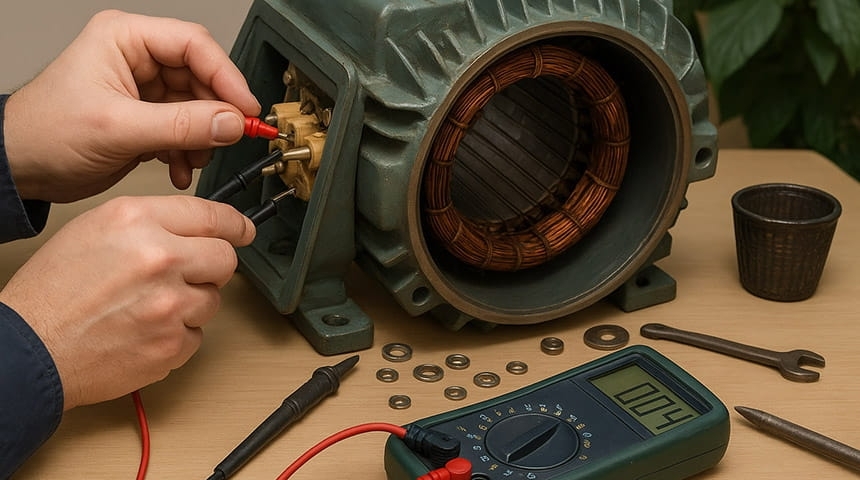- HOME
- FAQ
- Maintenance
- What Is Motor Phase Loss? How to Detect and Fix It?
What Is Motor Phase Loss? How to Detect and Fix It?

❓ What Is Motor Phase Loss?
Motor phase loss (also called phase failure or phase loss fault) occurs when one of the three power phases in a three-phase motor is lost due to a blown fuse, loose connection, cable damage, or power supply failure. Even though the motor may continue to run, it will operate with unbalanced current, reduced efficiency, and overheating, which can eventually lead to winding damage or insulation failure.🔍 How to Detect Motor Phase Loss?
You can identify phase loss using the following methods:- Voltage Measurement: Measure the three-phase voltage with a multimeter or power analyzer. If one phase shows 0 V or significantly lower voltage, a phase loss has occurred.
- Current Measurement: In normal operation, all three phase currents are balanced. During a phase loss, the remaining two phase currents rise sharply.
- Operational Symptoms: Reduced motor speed, loss of torque, increased vibration, abnormal noise, or frequent tripping of protection devices.
🛠 How to Fix Motor Phase Loss?
To prevent serious damage caused by phase loss, follow these steps:- Check the Power Supply: Inspect transformers, fuses, switches, and cables for faults or loose connections.
- Install Protective Devices: Use a phase failure relay (phase monitoring relay) that automatically disconnects the motor when a phase loss is detected.
- Perform Regular Maintenance: Check terminals, cables, and insulation conditions regularly to reduce the risk of recurrence.
💡 Summary
Motor phase loss is a common yet dangerous fault in three-phase motors. Through voltage and current monitoring and the use of phase failure protection relays, you can prevent winding burnout and production downtime. For safe and reliable operation of your industrial drive systems, phase loss prevention is essential.⚠️ Safety Warning:
- Phase loss involves high voltage and can be hazardous. Inspection or repair should only be performed by qualified electrical technicians to avoid electric shock or further equipment damage.
- When testing voltage or current, always use insulated tools and certified measuring equipment. Perform measurements only when it is safe or after power is turned off.
- Never attempt repairs or reconnections while the motor is running. Always disconnect the power and have maintenance performed by trained professionals.
